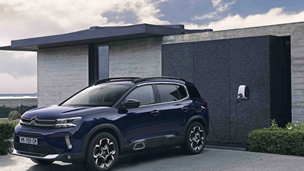The brakes are a critical part of any car and they are also something which gradually wear out over a long period of use. Brake pads, a main component of the disc brakes used in modern day cars, are the specific pieces which require the most attention to ensure your vehicle remains safe.
In this guide, we explain what you need to know about looking after and replacing the brake pads on a car, so you don’t have brake problems in the future.
What are brake pads?
Basically, brake pads are the parts of a car’s braking system which have the job of physically slowing down the vehicle’s wheels when the driver pushes the brake pedal to slow down.
Made up of steel backing plates with special friction material attached, brake pads apply pressure and friction to a vehicle’s brake rotors.
The rotors are the shiny, disc shaped objects which you’ve likely noticed if you’ve ever observed what’s behind the wheel of a modern car. Just in front of the disc shaped rotor is the brake caliper, a roughly rectangular-shaped object which partially covers the brake pads and squeezes them against the brake rotor.
It’s the friction and pressure applied to the circular brake rotor which slows and stops the turning wheel (and subsequently the whole vehicle).
While the process behind making brake pads is complex, understanding how to check brakes and replace the pads on them is thankfully a more straightforward thing.
How to check brake pads
It’s worth checking your brake pads either soon before an upcoming MOT, before a long journey or just as part of ongoing maintenance.
Some modern cars do have sensors built-in to the brake pads and will alert the driver via a dashboard warning light if they have worn down to a minimum level. Not all cars have such sensors though, in which case you’ll want to observe the pads with your own eyes.
Depending on what car you have, it may be possible to observe the brake pads just by looking at them through the gaps of your wheels. Even if this is possible though, you may only be able to see some of the brake pads behind the wheel rather than all of them, and different brake pads wear out at different rates.

To get the best view, you’ll want to take off the wheel covering the brake pad you wish to check. You can read our guide on how to change a flat tyre if you need to know how to remove and reattach your car’s wheels.
The main thing you want to do when observing a brake pad is check the thickness of it. The brake pad friction material should be no less than 3mm in thickness. You can try consulting your owner’s manual or a trained mechanic if you’re not entirely sure which parts behind your car’s wheels are the actual brake pads.
As an indicator of thickness, brake pads often have small metal hairs at the very bottom to let the driver know when they are about to run out of grippy material. Around the brakes and wheels there will usually be dust, something which naturally accumulates from the brakes during their use. But if there is a noticeable lack of dust nearby when observing a brake pad, that could be a sign that the pad is already dangerously worn out.
How long do brake pads last?
How long the brake pads on your car will last before they’ll need servicing depends largely on your driving pattern.
For instance, a car which is used predominantly for motorway driving could cover up to 60,000 miles before the brake pads could do with replacing. But the same type of car used mainly on congested city roads could only last about 25,000 miles or less before the brake pads wear out.
Front brakes normally wear out quicker than the rear brakes because they handle a greater percentage of the braking load, especially if it’s a front-wheel drive car.
When do brake pads need to be replaced?
As mentioned earlier, it’s generally advised that a brake pad should be replaced when it has worn down to 3mm of thickness. When you know this has happened to any of your car’s brake pads, you’ll want to get them fixed at a garage as soon as possible.
You’ll also want to think about getting your brake pads checked or replaced if you spot anything unexpected and concerning about the pads.




